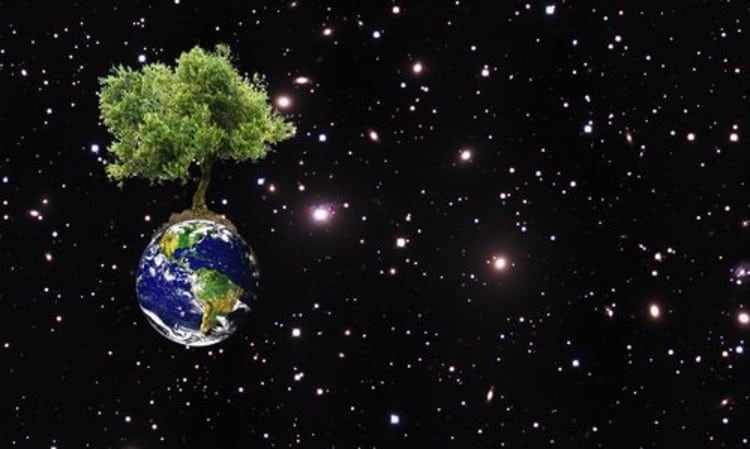Imagine that all of us—eaters, farmers, scientists, businesses, and policymakers—had a crystal ball, allowing us to look ahead 20, 50, or 100 years to see the future of the food system. Will cities of the future all have skyscrapers growing produce using solar energy? Will forests be the main providers of food and urban foraging become a coveted career? Or, will we be eating insects as our main source of protein?
Earlier this year, National Geographic began a series envisioning the future of food. This eight-month series covers topics ranging from fish farming and meat production to hunger in America and land grabs in sub-Saharan Africa. Their goal is to explore how to feed a growing population, without overwhelming the planet.
In May, National Geographic hosted a dialogue between leading food, agriculture, and policy experts to examine which issues must be addressed to successfully feed the planet.
“Globally, farming is large in scale, but it is also personal,” said Dennis R. Dimick, executive editor of National Geographic. Agriculture isn’t just about growing food. Agriculture impacts every aspects of our lives. “We want to meet the people who devote their lives to growing food that we depend on every day,” said Dimick.
Food Tank was fortunate to participate in a panel on “Food Security in an Insecure World.” Other topics covered during the dialogue included; the meaning of sustainability and sustainable sustenance, addressing climate change, and solutions for a hungry planet.
Jerry Glover, agroecologist and a National Geographic Emerging Explorer, claims the future starts with the past. He stressed the need for soil maintenance, stating, “we must maintain soil resources; soil is nonrenewable for the most part, and rarely do we bring it back richer than how we found it. In many parts of the world we are mining nutrients at faster rates than they can be replaced.”
Chef Jose Andrés—representing chefs of the world during the forum—talked about the reality of preparing food for the world’s poorest. “Thirty-thousand years ago, we were cooking with rocks and wood, and today over one billion people still cook this way.” Simple, clean, sustainable stoves, argued chef Andrés, remove the dangers of smoke inhalation for the family. “The time a young girl spends cutting down trees could be spent giving her an education,” according to Andrés.
And Jonathan Foley, director of the Institute on the Environment at the University of Minnesota, emphasized the need to “deliver more nutrition on less land by solving the ‘yield gaps’ by keeping smallholders on the farm and empowering them to do better.”
The first two issues of “The Future of Food” covered feeding a population of 9 billion. Foley detailed solutions for meeting the nutritional demands for the world’s people in the cover article, “A Five-Step Plan to Feed the World.” Foley argues the world needs to reduce deforestation, deliver more nutrition on less land, empower smallholder farmers, reduce water usage, rethink diets and biofuels, and eliminate food waste. “Thirty-to-fifty percent of food is never consumed – globally and even in low-income countries.”
In the July issue, “The Next Breadbasket,” photographer and journalist Robin Hammond presented photos from his trip to Somaliland where he learned that 1.3 million sheep and goats are exported overseas each year—this is the largest movement of live animal trade “on the hoof” anywhere in the world. Over 50 percent of Somaliland’s GDP is made up of livestock exports.
National Geographic will continue to showcase photos, videos, infographics, and stories through the “Future of Food” series. “We cannot just turn the lens on the rest of the world, but must turn the lens on ourselves, too. We need to understand why there are problems occurring in rural, urban, and suburban America,” said Dimick.
The magazine has published valuable resources on ways to successfully feed the planet, combat climate change, reduce water use, and much more.
Here are some of National Geographic’s resources and a sneak peek of what’s to come:
- How to farm a better fish including a polyculture operation that incorporates fish, a pond, and rice that has tripled output with little environmental downside.
- Daily discussions on food from experts in food and agriculture, helping readers understand how food has made us who we are today and how it shapes our future.
- Photos of the California drought and how modern farming and natural forces have altered landscapes.
- Photos of bakers in Kashmir, ice cream vendors in Turkey, and other food producers around the world.
- Videos of rooftop farming projects in Brooklyn and other U.S. cities which are spreading around the world.
- Videos in National Geographic’s Food by the Numbers series feature animated infographics to show readers how everything we eat adds up and impacts natural resources.
- Opportunities to join the conversation on Twitter by following along or using #FutureofFood.
- A recap of Food: A Forum in 1,376 tweets and 20 instagram posts.
- A question of the week feature where experts provide detailed answers to pressing questions about the world’s food issues.
- Daily food facts that highlight fun and surprising trivia about different foods.
- An article showing what eaters can buy with US$10.00, a look at how far US$10.00 go if a consumer is buying fast food versus fresh produce (Coming Soon)
- A look at what soldiers eat (Coming Soon)
- How much water does it take to produce a hamburger? (Coming Soon)
What resources or solutions do you have for feeding a growing population, without overwhelming the planet?







